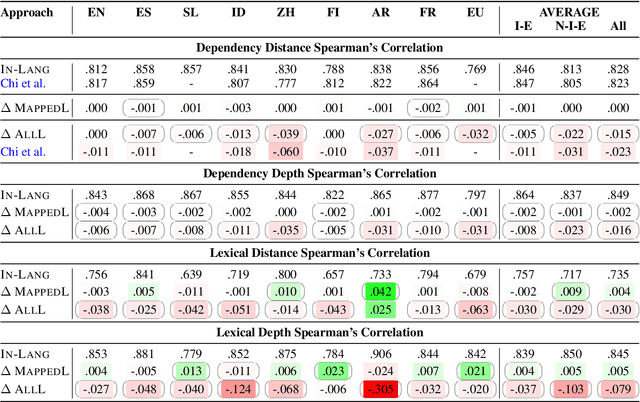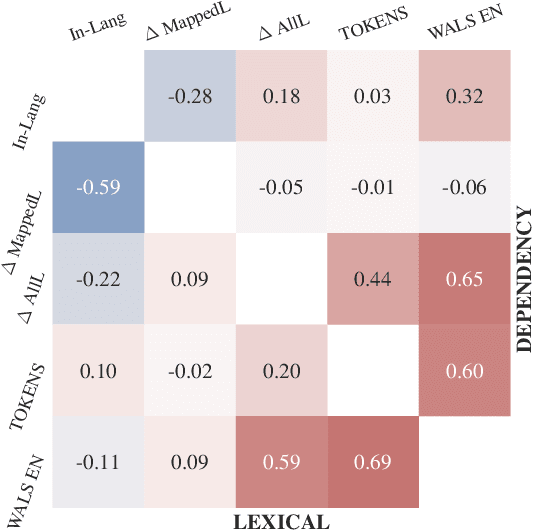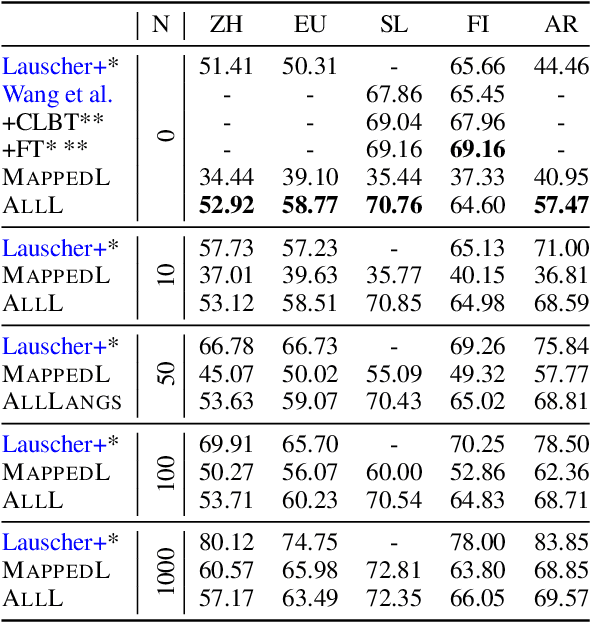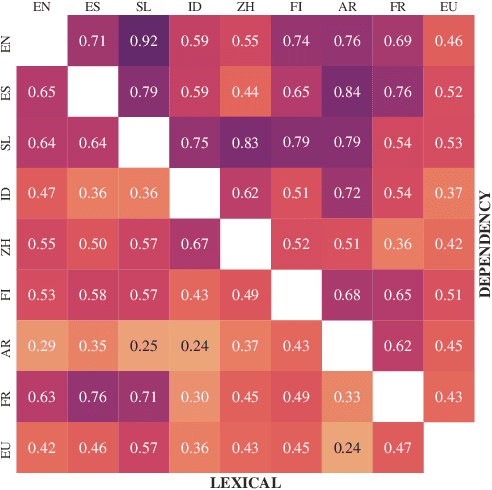Examining Cross-lingual Contextual Embeddings with Orthogonal Structural Probes
Paper and Code
Sep 10, 2021



State-of-the-art contextual embeddings are obtained from large language models available only for a few languages. For others, we need to learn representations using a multilingual model. There is an ongoing debate on whether multilingual embeddings can be aligned in a space shared across many languages. The novel Orthogonal Structural Probe (Limisiewicz and Mare\v{c}ek, 2021) allows us to answer this question for specific linguistic features and learn a projection based only on mono-lingual annotated datasets. We evaluate syntactic (UD) and lexical (WordNet) structural information encoded inmBERT's contextual representations for nine diverse languages. We observe that for languages closely related to English, no transformation is needed. The evaluated information is encoded in a shared cross-lingual embedding space. For other languages, it is beneficial to apply orthogonal transformation learned separately for each language. We successfully apply our findings to zero-shot and few-shot cross-lingual parsing.
 Add to Chrome
Add to Chrome Add to Firefox
Add to Firefox Add to Edge
Add to Edge